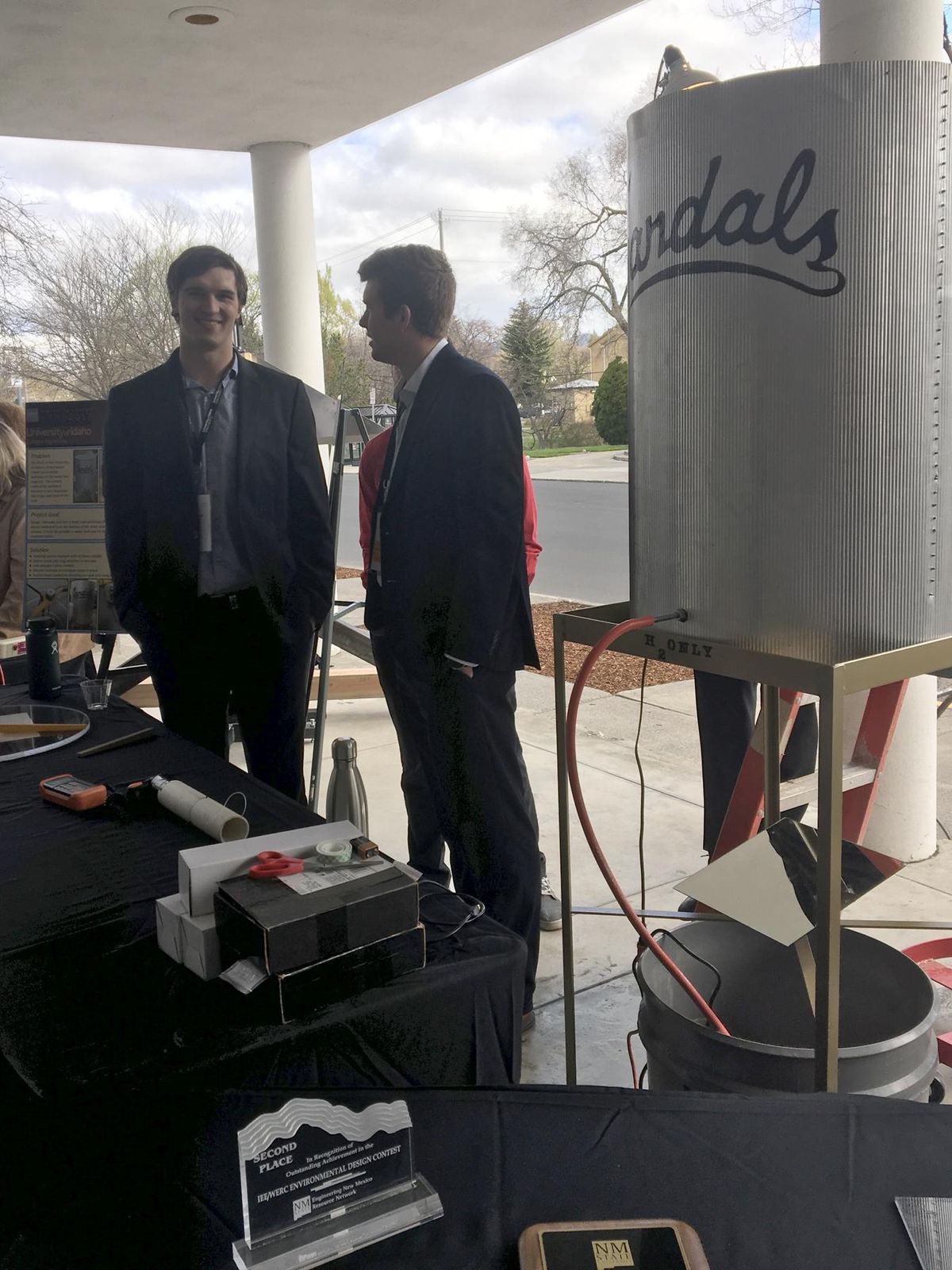University of Idaho Engineering Design Expo provides platform for novel inventions

The last time the region took notice of the University of Idaho College of Engineering, an accident with rocket fuel sent four members of the Northwest Rocket Engineer Club affiliated with the college to the hospital April 13.
So the 24th annual Engineering Design Expo last week was in all ways a better showcase for the school.
About 200 UI students across seven engineering disciplines, and the finalists in the first- through eighth-grade Invent Idaho contest, gave presentations Friday on their applied research at the university’s Pitman Center. About 500 high school students from North Idaho and Eastern Washington attended the event.
For years, the UI engineering school, hardly the largest, has enjoyed a reputation for punching above its weight.
“A lot of our graduates are very prominent in regional companies. We feel we’re doing a great job,” said UI President Chuck Staben, who toured the Pitman Center presentations.
UI’s reputation was built in large measure on a culture of innovation. The expo was the first such event among Northwest engineering colleges. Idaho is also among the first 50 engineering schools in the country to shape curricula around the National Academy of Engineering’s “14 grand challenges for engineers in the 21st century,” according to Rob Patton, the college’s director of marketing and information. Those challenges are grouped under four large themes: sustainability, health, security and the joy of living. Brent Stacey, strategic adviser for national and homeland security at Idaho National Laboratory, delivered an expo keynote address on cybersecurity and protecting critical infrastructure.
UI seniors’ yearlong capstone projects provided the foundation for the expo. Student teams worked with a sponsor or client to solve a real-world engineering problem.
“It’s wonderful for our students,” Staben said. “It’s a good opportunity for them to present to an audience about their projects. It’s a good way to encourage alliances between our students and Idaho industry, and it’s a good way to encourage K-12 students.”
Eric Hill, a senior from Kamiah, Idaho, was a member of a mechanical engineering team that worked with the UI facilities department to design a way to clear sediment from a 2.5-million-gallon water tank near the Kibbie Dome.
“We put all this time into our class assignments,” he said. “Basically, everybody is doing the same thing. Finally we’ve got our own problem. We work with a client on solutions. It’s great experience for real-life problems you can solve.”
Because the tank would not have to be drained to be cleaned, as it is now, Hill’s team’s scheme could save the university $200,000 per cleaning. If the UI adopts it, that would be a pretty cool legacy for an alum, Hill said.
The expo also provided glimpses of the future of engineering. In the Pitman Center aisle for Invent Idaho finalists, Amiah Van Hill, 6, from Coeur d’Alene, displayed her concept of a drone used to file library books. Reija Kusuma, 10, of Boise, engaged Staben in a discussion about her “sleep ninja bed” that would use an algorithm to provide soothing music, touch and a mother’s scent to create an ideal sleep environment. The idea sprung from watching relatives attempt to soothe a young cousin with a sleep disorder, she explained.
One project, invented by a UI team of chemical and materials engineering students and consisting of wireless sensors linked to the internet, won an environmental design contest in New Mexico. The technology would allow land managers to control ideal irrigation regimens in real time.
The project also helped propel one of the team members, Taylor Davis, of Boise, to doctoral research at Arizona State University. After graduating from Idaho, she will take up a four-year fellowship at ASU.
“I actually wanted to be a lawyer in high school,” she said, but an internship in Washington, D.C., convinced her otherwise. When she came to college “people told me chemical engineering was the hardest degree. I figured I’d start there and work my way down. But I love it.”
The excited buzz echoing in the Pitman Center as hundreds of students discussed their projects with onlookers suggested what the expo gives the university, Staben said. Beyond that, it is difficult to quantify what the university gains from the event, because over more than two decades it has become such a part of the engineering school’s history.
To determine that, said the president, “we would have to do the experiment of not having the expo.” He smiled. “We’re not going to do that experiment.”